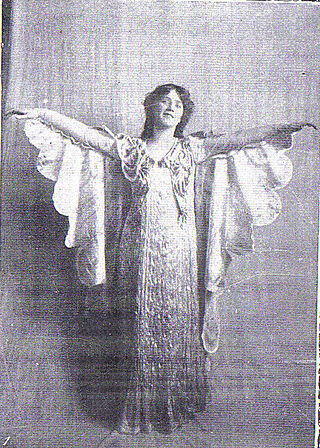Related Research Articles

Sir William Huggins was a British astronomer best known for his pioneering work in astronomical spectroscopy together with his wife, Margaret.

Isabel Emily Jay was an English opera singer and actress, best known for her performances in soprano roles of the Savoy Operas with the D'Oyly Carte Opera Company and in Edwardian musical comedies. During Jay's career, picture postcards were immensely popular, and Jay was photographed for over 400 different postcards.

Sophia Theresa "Sophie" Pemberton was a Canadian painter who was British Columbia's first professional woman artist. Despite the social limitations placed on female artists at the time, she made a noteworthy contribution to Canadian art and, in 1899, was the first woman to win the Prix Julian from the Académie Julian for portraiture. Pemberton also was the first artist from British Columbia to receive international acclaim when her work was exhibited at the Royal Academy in London (1897).

Joseph Rodefer DeCamp was an American painter and educator.

Sir Reginald Theodore Blomfield was a prolific British architect, garden designer and author of the Victorian and Edwardian period.
AFI's 100 Years...100 Stars is the American Film Institute's list ranking the top 25 male and 25 female greatest screen legends of American film history and is the second list of the AFI 100 Years... series.

The Royal Birmingham Society of Artists or RBSA is an art society, based in the Jewellery Quarter in Birmingham, England, where it owns and operates an art gallery, the RBSA Gallery, on Brook Street, just off St Paul's Square. It is both a registered charity, and a registered company.

Herbert James Draper was an English Neoclassicist painter whose career began in the Victorian era and extended through the first two decades of the 20th century.

Ethel Charlotte Pedley was an English-Australian author and musician.

Elizabeth Thomasina Meade Smith (1844–1914), writing under the pseudonym L. T. Meade, was a prolific writer of girls' stories. She was born in Bandon, County Cork, Ireland, daughter of Rev. R. T. Meade, of Nohoval, County Cork. She later moved to London, where she married Alfred Toulmin Smith in September 1879.

Charles Lucas was an English composer, cellist, conductor, publisher and from 1859 to 1866 third principal of the Royal Academy of Music.

The East and West Africa Medal, established in 1892, was a campaign medal awarded for minor campaigns that took place in East and West Africa between 1887 and 1900. A total of twenty one clasps were issued.

Percy Hilder Miles was an English composer, violinist and academic. For most of his career he was Professor of Harmony at the Royal Academy of Music. Among his students at was the composer Rebecca Clarke, and among Miles' associates was Lionel Tertis.
Margaret Ismay was a British opera singer. While a student at the Royal Academy of Music, she was awarded the Academy's Gilbert Betjemann Prize "for operatic singing" in 1909. She later had the medal converted into a coin watch by Cartier.

Llewela Davies was a Welsh pianist and composer who toured with Dame Nellie Melba.

Jessie Kate Rose was an English opera singer and actress primarily known for her performances as principal mezzo-soprano in the Gilbert and Sullivan comic operas with the D'Oyly Carte Opera Company. From 1896 to 1899 she originated several mostly smaller roles in Savoy operas and then continued to play a variety of smaller and larger roles in repertory with the company. She was its principal mezzo-soprano from 1904 to 1909.
William Charles May was an English sculptor and painter active from about 1870 to 1931.

Daly's Theatre was a Broadway theatre at 1221 Broadway and 30th Street. It was built in 1867 and opened that year as Banvard's Museum but changed its name the following year to Wood's Museum and Metropolitan. In 1876 it became the Broadway Theatre, and finally was named Daly's Theatre in 1879 when it was acquired by Augustin Daly. After 1899, it was operated by the Shubert family. The building was demolished in 1920, after serving as a burlesque theatre and cinema.

Charles Childerstone was an English operatic tenor and actor who after a career on the stage including a period with the D'Oyly Carte Opera Company from 1896 to 1903 later had a career on the music halls and in film. His theatrical career spanned four decades and included musical comedy and the legitimate theatre.
References
- 1 2 3 4 "Stowe House 1". Antiques Roadshow. Series 35. Episode 13. 22 February 2013. BBC . Retrieved 19 March 2013.
- ↑ "Prize board, Gilbert Betjemann Prize, Royal Academy of Music, 1897-47 (Board 1/2)". collections.ram.ac.uk. 18 December 2023.
- ↑ "Prize board, Gilbert Betjemann Prize, Royal Academy of Music, 1897–47 (Board 1/2)" [2003.1167]". Royal Academy of Music . Retrieved 19 March 2013.
- ↑ Musical Times, 1 October 1896.
- ↑ Royal Academy of Music prize book, 1948
- ↑ "Gilbert Betjemann Memorial Prize".